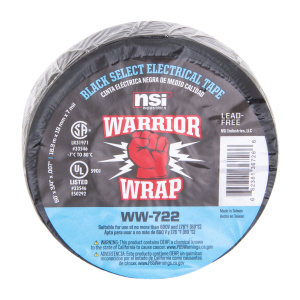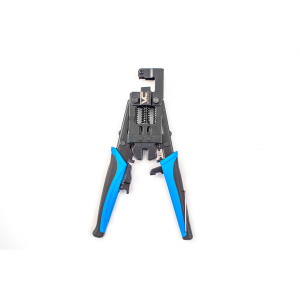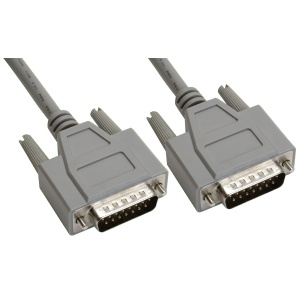Network Certifiers are not your typical everyday tools. They can be as simple as a screwdriver or as complex as a supercomputer, depending on how you use them. Knowing how to utilize one is a game-changer, so let’s embark on the journey of unraveling the mysteries of “How to Use a Network Certifier: Step-by-Step Guide.”
Getting Started: What is a Network Certifier?
A Network Certifier is a specialized device used to assess the performance of network systems. It is an indispensable tool for IT professionals and network engineers who need to certify that a newly installed network meets specific industry standards. But what are these standards, and why are they important?
Industry standards such as TIA (Telecommunications Industry Association) and ISO (International Standards Organization) provide guidelines for cable performance and network installation. Following these standards ensures that your network can effectively transmit data without any glitches, lag, or data loss. So, using a network certifier allows you to guarantee your network’s integrity and optimize its performance.
Understanding the Importance of Network Certifiers
Now that we know what a network certifier is, we might wonder, ‘Why are network certifiers so essential?’ There are several reasons, and we’ll dive into each of them.
Preventing Network Failures
One of the key reasons to use a network certifier is to prevent network failures. The tool allows you to detect potential issues with your network infrastructure before they manifest as full-blown problems. Consequently, you can preemptively take corrective measures to ensure seamless network operation.
Ensuring Compliance with Industry Standards
Certifiers also ensure that your network complies with industry standards, as mentioned earlier. They are designed to evaluate the performance of your cables against the guidelines set by TIA and ISO. By doing so, the tool guarantees that your network can effectively transmit data without hiccups.
Optimizing Network Performance
Lastly, a network certifier helps optimize network performance. It assesses the quality of your cables and determines their capacity to carry data. With this information, you can make necessary adjustments to ensure that your network performs at its best.
Choosing the Right Network Certifier for Your Needs
Like any tool, network certifiers come in different shapes and sizes, each designed for a specific need. So, how do you go about selecting the right one for you?
Evaluate Your Network Requirements
First and foremost, consider the type and scale of your network. Large corporate networks will need a more advanced certifier than smaller, home-based networks. By understanding your network requirements, you can narrow down your options and find a suitable tool.
Understand the Features
Different network certifiers come with different features. Some can perform basic wire-mapping, while others can perform advanced diagnostics like identifying specific faults in your network. Familiarize yourself with the features of each tool to understand which one fits your needs best.
Consider the Price
Lastly, consider the price. Network certifiers can be pricey, so it’s crucial to find one that gives you the most bang for your buck. It’s also worth noting that more expensive doesn’t always mean better. The best network certifier is one that fits your needs and budget.
How to Use a Network Certifier: Step-by-Step Guide
Alright, now that we’ve gone through the what, why, and which, it’s time to jump into the ‘how.’ Here’s your comprehensive step-by-step guide on using a network certifier.
- Prepare the Device: Start by setting up your network certifier. This usually involves installing batteries, connecting any necessary cables, and turning on the device. Some certifiers may also require you to install software or updates before use.
- Select the Correct Standard: Choose the correct standard for your network. This could be a TIA or ISO standard, depending on your network configuration. Most certifiers come with an option to select the standard on the device.
- Connect the Certifier to Your Network: Connect the network certifier to your network using the appropriate cables. Typically, this involves connecting one end of the certifier to the network’s patch panel and the other end to the wall outlet.
- Start the Test: Once everything is set up, start the test. Most network certifiers will have a ‘Test’ or ‘Start’ button that you can press to begin the certification process.
- Analyze the Results: After the test is complete, the certifier will display the results. These results will indicate whether your network meets the selected standard. Some certifiers may also provide detailed reports on specific network parameters.
- Take Necessary Actions: Based on the test results, take any necessary actions. This could involve making adjustments to your network or replacing faulty cables.
Advanced Network Certifier Features
Not all network certifiers are created equal. Some come with advanced features that make network certification a breeze. Let’s delve into some of these features.
Wire Mapping
Wire mapping is a feature that allows the certifier to identify the physical layout of a network. This is particularly useful in identifying any wiring faults, like incorrect pairings, shorts, or open circuits.
PoE Testing
Power over Ethernet (PoE) testing is another essential feature. PoE refers to the ability to deliver both power and data over a single Ethernet cable. A certifier with PoE testing can verify whether your network supports this feature.
Advanced Diagnostics
Some network certifiers also come with advanced diagnostics. These allow the certifier to identify specific faults in your network and suggest corrective measures. It’s like having a dedicated network engineer in your pocket!
Pro Tips for Using a Network Certifier
Even with a step-by-step guide, there are a few extra tips that can make your network certification journey smoother. Here are some pro tips for using a network certifier.
- Update Your Device: Make sure your certifier is updated with the latest software and standards. This will ensure that your tests are as accurate and reliable as possible.
- Double-Check Your Connections: Ensure all connections are secure before starting a test. Loose connections can lead to incorrect results.
- Test All Cables: Don’t just test the cables that you suspect are faulty. Test all cables in your network to ensure optimum performance.
- Understand the Results: Make sure you understand what the test results mean. The best network certifier is useless if you can’t interpret the results correctly.
FAQs on How to Use a Network Certifier
Let’s dive into some frequently asked questions about network certifiers and their usage.
1. What is a network certifier? A network certifier is a tool that assesses the performance of a network against specific industry standards.
2. Why is it important to use a network certifier? Network certifiers prevent network failures, ensure compliance with industry standards, and optimize network performance.
3.How do I choose the right network certifier? Evaluate your network requirements, understand the features of different network certifiers, and consider the price.
4. How do I use a network certifier? Prepare the device, select the correct standard, connect the certifier to your network, start the test, analyze the results, and take necessary actions.
5. What advanced features can a network certifier have? Advanced features can include wire mapping, PoE testing, and advanced diagnostics.
6. What are some pro tips for using a network certifier? Ensure your device is updated, double-check your connections, test all cables, and understand the results.
Conclusion: Optimizing Networks with a Network Certifier
Learning how to use a network certifier can open doors to optimized network performance and better data handling. With this step-by-step guide, you are well-equipped to take on the task. Remember, the key to mastering the art of network certification lies in understanding the tool, knowing how to interpret the results, and taking necessary actions based on those results.
So, get your hands on a network certifier and begin your journey towards efficient network management. Let’s transform the way we approach network systems, one certification at a time!












